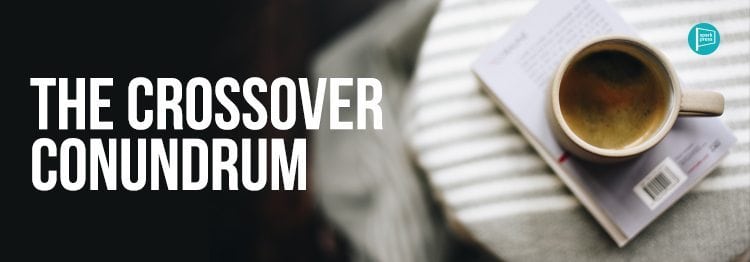
This article is provided courtesy of Deborah Batterman, author of Just Like February.
Back when I published my short story collection, I found myself caught in a crossfire of classification. The cover image of a pair of shoes, coupled with the title (Shoes Hair Nails, Uccelli Press, 2005), was intended to suggest that symbols of femaleness, too often trivialized, have deeper meanings. I envisioned my collection attracting readers of both women’s literary fiction and chick lit, even as I came to understand the nuanced, even arbitrary, distinctions in the way books, especially for women, are categorized for purposes of marketing.
My Spring 2018 novel, Just Like February, has me once again thinking about crossover categories in fiction, specifically YA and adult literary fiction. As a coming-of-age story told from the perspective of a young narrator, it would seem to fall within the parameters of young adult fiction, and initially I pitched it along those lines. Coming of age is certainly a theme consistent with young adult novels, but the market-driven publishing mindset apparently has something more specific in its determination of what makes a book YA.
As a category (not to be confused with a genre), young adult literature dates back to 1957 when the Young Adult Library Services Association was created. Until then, there was no literature aimed specifically at teens. That’s not to say that books appealing to the 12-18 audience now defined as young adult didn’t exist; there were classics teens were reading before they became a targeted market. Think Anne Frank: The Diary of a Young Girl, Little House on the Prairie, The Call of the Wild, and, of course, The Catcher in the Rye. Then through the ’70s and ‘80s, books like S.E. Hinton’s The Outsiders, Judy Blume’s Are You There, God? It’s Me, Margaret, and Robert Cormier’s The Chocolate War spawned a golden age of YA literature—one that originally embraced an honest, open treatment of sex, which became more taboo, something to “steer clear of” as the ‘80s rolled in. The ’90s then hit a new stride with the Harry Potter phenomenon, which brought adults into the “YA reading fan” mix.
Writers immersed in genre fiction have more of a roadmap to work with in both the writing and marketing of their books than do writers of what we think of as literary fiction. Loosely defined, YA is literature for and about teens: the voice (i.e., point of view) is adolescent. Initially drawing on realism for subject matter, it expanded to the realms of dystopia, fantasy, horror.
When I set out to write my novel, I had a young narrator in mind and the central question I asked as the novel took shape was: how did we get from the sex/drugs/rock’n’roll ’60s to the sex-as-death ’80s? More to the point, how would someone coming of age during the ’80s process the new reality?
A novel that spans time, with a narrator looking back, is not, apparently, what YA editors are looking for. Doesn’t matter that the voice is that of a young adult. By strict definition, a young adult story is told as it’s happening, not through the lens of a narrator reflecting back on an earlier time. This was made clear to me by a YA editor who found my novel beautifully written, and saw it more in the light of books like Bastard Out of Carolina and Peace Like a River, adult novels that evoke a particular time and place via the voice of a young narrator. To offer up suggestions on how I might reshape it as a YA read would be doing me a disservice, she said. In a word, she saw the integrity of the narrative for what it is. Should I be surprised that both titles she compared my book to show up on lists featuring grownup books for teens?
There’s irony here, too. Changing times and evolving markets only serve to reinforce what one expert has called the amorphous nature of young adult literature. It’s that very fluidity, I think, that contributes to its crossover appeal. Adults may be drawn to the YA narrative voice for the fresh perspective it offers; seeing a given situation, or time period, through the eyes of the teenagers we once were is a kind of affirmation of the innocence-to-experience scenario. The suggestion that classics like The Catcher in the Rye would be classified as YA if they were published today only confounds things for a writer trying to position a book that may fall between the YA/adult literary rock and hard place. For what it’s worth, Robert Cormier originally tried publishing The Chocolate War as adult fiction. His agent decided to pitch it as teen fiction. In the world of YA fiction, the dark realism of the novel would make it a game changer.
For every writer uncertain about the implications of YA classification, there are more who embrace it. And that’s a good thing for teen readers, adult readers, and those of us who write novels that sit on the increasingly transparent boundary between YA and adult literary fiction.

Leave A Comment